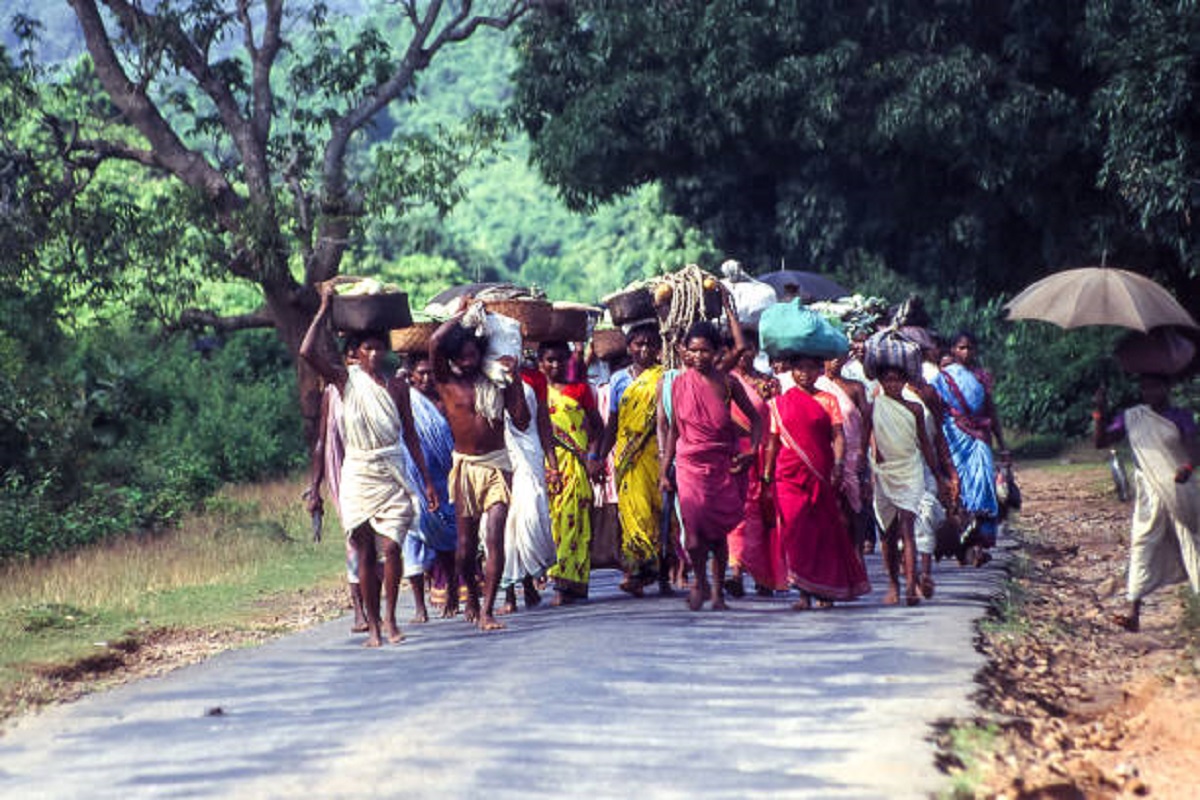After the announcement of the assembly elections in the state, politicians from the BJP, Congress, and AAP have been actively campaigning in tribal areas of Gujarat.
It is no surprise that the BJP is banking heavily on tribal people for not only assembly elections in the state but also for the next Lok Sabha elections.
Advertisement
While Droupadi Murmu’s election as President of India is a crucial step toward mainstreaming long-overdue Adivasi representation, it is also undoubtedly an attempt by the saffron party to win over those who haven’t been its traditional supporters.
This time around, when all three major political parties are vying for majority in Gujarat, none can afford to ignore over 15 percent of the population of the state that the tribal minority accounts for as it has the potential to significantly influence the electoral fortunes of the parties.
In the most recent assembly elections, the BJP and the Congress tied for first place in seats with predominantly tribal voters. The BJP’s vote share grew by about 52 percent in the 2019 Lok Sabha elections, while that of the Congress decreased to 38 percent.
No doubt, BJP has a very strong base in Gujarat. But given that the Adivasi ethnic group makes up over one-seventh of the state’s population and that AAP has also chosen to target the Adivasi votes, the party should be concerned about the Aam Aadmi Party’s continuous inroads into the state.
Recently, during a campaign in Gujarat, Arvind Kejriwal, the convener of the AAP, promised the oft-neglected tribal population that if his party came to power, it would apply the Constitution’s Fifth Schedule and the Panchayat (Extension to Scheduled Areas) Act (PESA Act) in the tribal areas of Gujarat.
In terms of absolute numbers, Gujarat has the fifth largest population of Scheduled Tribes (ST) in India. As per the census, they are one-seventh of the state’s population, and are mostly located in the eastern areas close to Rajasthan and Maharashtra. A vast majority of the ST population is made up of twelve major tribes.
The majority of the community lives in rural Gujarat, where they make up one-fifth of the population. This number virtually cuts in half in semi-urban areas and a pitiful 2 percent of people live in metropolitan areas.
As for the reservation for the tribal community in the state, there are 27 ST seats reserved for them. However, there are 47 assembly seats where the ST population is over 10 percent.
There is a concentration of more than 20 percent STs in 40 assembly seats. On the other hand, more than 30 percent of ST people live in 31 assembly seats.
In Gujarat’s tribal-dominated Dahod area, PM Narendra Modi attended an event in April this year. In addition to emphasising his own efforts as Gujarat’s chief minister for the welfare of the state’s tribes, Modi, who was dressed in a tribal jacket while addressing a crowd, spoke about the Birsa Munda, a legendary freedom fighter, and other tribal heroes. In the past, scheduled tribes in Gujarat relied on the Congress Party.
The BJP is attempting to win over the support of the scheduled tribes not just in Gujarat but also in Himachal Pradesh. Just a few months before the assembly elections in the state, The Hatti community of Himachal Pradesh received the status of “tribe” from the BJP government at the Centre.
The BJP is in power in Gujarat since 1995. Naturally, the party’s performance has been subpar in places with a higher Adivasi population. Until the 1980s, it garnered almost 60 percent of votes in the ST-reserved seats.
When Congress’s share in those reserved seats in Gujarat was reduced to 36 percent in the 1990 Assembly elections, this pattern came to an end.
What’s remarkable is that the Congress party has managed to maintain its ST base in Gujarat despite being out of power for two and a half decades. On the other hand, the BJP garnered 52 percent of the votes in ST-reserved seats in 2019.
The BJP increased its support in these reserved seats by 5 percent from the 2012 Assembly election to 2017, when it faced severe anti-incumbency for the first time since 1990. Even though the vote share in ST-reserved districts has increased, the BJP is still behind the Congress in terms of seats won.
In the previous three assembly elections, the Congress outperformed the BJP in the reserved seats. In the 2017 assembly elections, the BJP and the Congress were neck and neck in terms of Adivasi vote preference in the state.
While the AAP’s performance is not yet known, Congress has a history of having greater clout when it comes to the reserved seats of STs. The impact of the BJP’s massive outreach in tribal areas remains to be seen at the hustings.
The destiny of the state will be decided by Adivasi votes. In the tribal areas of Gujarat, the Congress has consistently had majority, but the BJP has steadily improved its chances.











